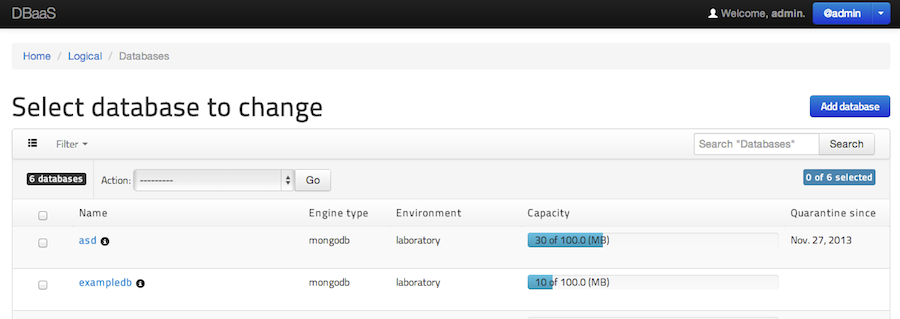This is an implementation of a database as a service api written in python + django. It will try to follow some hypermedia concepts throughout the api calls.
Below: Screenshot from the admin user.
image 1: Listing databases and their summary informations
image 2: example database view and all its credentials
DBaaS requires the following:
- python >= 2.7.5
- virtualenv >= 1.7.2
- virtualenvwrapper >= 3.5
- mysql server and client, version 5.5.x
- mongo client = 2.4 (used by the clone feature)
- redis (broker for async tasks with celery)
- and all packages in requirements.txt file (there is a shortcut to install them)
- Install Docker
mkvirtualenv dbaas
workon dbaas
Install the required python packages.
make pip
Install redis and start celery
make run_celery
Create the tables structure (see the next item)
DBaaS uses south to maintain the migrations up-to-date. However, you can just run syncdb to create the table structures. There is a shortcut to help you with that, including some minimum operational data on DB.
make reset_data
make pip && make test
make docker_build && make test_with_docker
make run
In your browser open the URL: http://localhost:8000/admin/
To run celery locally use the following command
cd {APP DIR}
make run_celery

